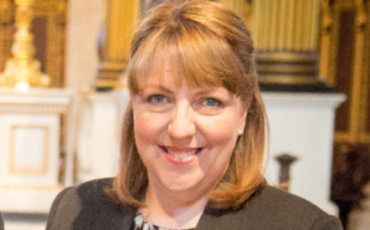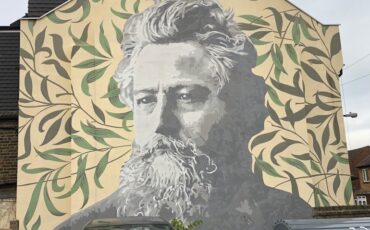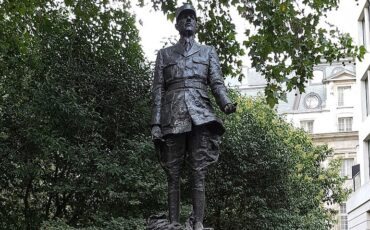Blog
Blog Posts

Because I’m A Londoner: From Nurse To Blue Badge Tourist Guide
This is the fourth in a series of articles written by London Blue Badge guides who used to be key workers in the capital. Janet Robinson writes about her work as a nurse before she became a London Blue Badge Tourist Guide.
Read more
70th Anniversary Of The Festival Of Britain in London
Let me take you back to the Britain of 1951. The Second World War had ended just six years earlier. London, like many other British cities, had been bombed relentlessly and still bore the scars of the Blitz. Surviving buildings were covered in layers of dark sooty dust and rationing was still the order of the day and, for fresh meat, remained in place until 1954.
Read more
His Royal Highness Prince Philip, Duke of Edinburgh (1921 – 2021)
The death of Prince Philip at the age of ninety-nine was announced by Buckingham Palace at midday on 9th April 2021. Prince Philip and the Queen had been married for seventy-three years since their wedding at Westminster Abbey in 1947. He was the longest-serving consort to a monarch in the history of the United Kingdom.
Read more
The Oxford Cambridge Boat Race – Normally Held In London
One of London’s best-known events is the annual Boat Race, a contest between crews from Oxford and Cambridge University Boat Clubs held every spring on the River Thames. The two teams go head to head over a 4.2 mile (6.8 kilometre) course that stretches between Putney and Mortlake.
Read more
7 British Monarchs Who May Have Been Gay
For centuries men lived in one sphere and women in another and they would come together for marriage and having children. It seemed that the sexes co-existed mainly to continue the human race. Love and sex can be very different factors but, when put together, they can produce the most electric sensation. This was no different for kings and queens who were close to their favourites. Many kings – and one queen – may have been gay, members of what we now call the LGBT (lesbian, gay, bi- and transexual) community.
Read more
Because I’m A Londoner: From Doctor To Blue Badge Tourist Guide
This is part of a series of articles written by London Blue Badge Tourist Guides who used to be key workers in our capital city. Barry Walsh qualified as a London Blue Badge Tourist Guide in 2000 while working for Public Health England. He writes about his life as a guide and doctor.
Read more
A Year Of Live Broadcasts From Guide London’s Blue Badge Tourist Guides
Guide London’s Blue Badge Tourist Guides are used to talking to groups, families and individuals in the open air and at sites like Westminster Abbey and the Tower of London where they are qualified to conduct tours. However, they have had to adjust to the new reality of life during COVID-19 and many have demonstrated their knowledge and skills on the Internet.
Read more
Queen Elizabeth Olympic Park Walks & Tours
Want some exercise but want to be entertained too? There is no better way to explore Queen Elizabeth Olympic Park and discover its history than a walking tour with a London Blue Badge Tourist Guide. Hear about the history of the area, the regeneration and legacy work being carried out on the Park. Relive the memories of the London 2012 Olympic and Paralympic Games and discover little-known stories and fascinating facts and figures.
Read more
All Change On The South Bank – Brutalism Revisited
The Queen Elizabeth Hall, Purcell Room and Hayward Gallery on the South Bank are now closed, preparing for a two-year refurbishment, and will re-open in 2017, which is exactly 50 years since they first opened in 1967-8. They are immune from listing status, unlike the Festival Hall, which is Grade 1 and the National Theatre is Grade 2 listed.
Read more
Walthamstow: An Art-Friendly Part Of London
Step outside central London and you might find the suburbs are brighter than you think. Come out of the underground station at Walthamstow Central, walk around a little and you will find there is plenty to see: bric-a-brac shops dotted around, a long street market and great museums like the Vestry House in the Walthamstow Village area. My top tips for three must-sees in this area are the William Morris Gallery, God’s Own Junkyard and the Street Art.
Read more
A Visit To Barking Abbey Ruins In The East End Of London
As one of London’s blue badge tourist guides, much of my spare time is spent adding to my knowledge of the history and events taking place in Central London. With plenty of extra time on my hands and not being able to travel, I decided it was time to look at history closer to home. So one frigid afternoon, I took Eric out for an extra-long walk, which he just loves. Eric is my bichon frise, still a puppy with oodles of energy, so that means several walks during the day to try and tire him out. My mission that afternoon was to visit the ruins of Barking Abbey in the East End of London.
Read more
The Long Footsteps Of Charles De Gaulle In London
Charles de Gaulle, a junior minister in a collapsing government and a relatively junior general in an army that was ceasing to exist, landed at Heston airport after a gruelling and perilous flight from Bordeaux, on Monday 17 June 1940. Few of his British hosts knew who he was, Winston Churchill being the exception. During his visits to France, Churchill had immediately noticed “a young, energetic general called de Gaulle.” `(In Gabriel Le Bomin’s biopic of de Gaulle, which features the early days of the two men’s relationship, Churchill is brilliantly played by Tim Hudson – who is also a London Blue Badge Guide!)
Read more


